
Bike spacers may seem like small, insignificant components, but they play a crucial role in optimizing your cycling setup. These simple rings, typically made of aluminum or carbon, are installed on the headset of your bike, between the stem and the frame’s steering tube. Though often overlooked, spacers can significantly affect your comfort, performance, and overall riding experience. 1. Adjusting Handlebar Height One of the main purposes of bike spacers is to adjust the height of your handlebars. By adding or removing spacers, you can fine-tune the positioning of your handlebars to achieve the most comfortable riding posture. Raising the handlebars using spacers promotes a more upright riding position, which is ideal for comfort on long rides or for cyclists with back or neck issues. Conversely, lowering the handlebars can put you in a more aggressive, aerodynamic position, perfect for racing or when looking to reduce wind resistance. 2. Personalizing Fit Every rider is different, and getting the right fit is crucial for performance and comfort. Spacers offer an easy and cost-effective way to make subtle adjustments to the fit of your bike without needing to purchase a new stem. This flexibility is particularly useful during bike fitting sessions, where small adjustments can have a big impact on your riding experience. Spacers allow you to find a setup that feels just right, whether you're a recreational rider or a competitive cyclist. 3. Ensuring Frame and Stem Compatibility Spacers can also help ensure that your stem and frame are compatible in terms of stack height. For bikes with frames that have a shorter head tube, spacers can make up the difference and allow for a more ergonomic fit. This also ensures that your stem can be properly mounted and that the handlebars are in the right position for optimal control. 4. Improving Handling and Control By adjusting the height of your handlebars with spacers, you can enhance bike handling and control. A higher handlebar position can improve your leverage and make it easier to steer, particularly on technical terrain or in city commuting situations. A lower handlebar position, on the other hand, can improve stability and responsiveness at high speeds, offering better handling during descents or cornering. While small in size, bike spacers are an essential component in creating a customized and comfortable ride. Whether you’re adjusting handlebar height, personalizing fit, or improving bike handling, spacers give you the flexibility to fine-tune your setup for maximum performance. When paired with the right stem parts, they ensure that your bike is perfectly tailored to your unique riding style and needs. Explore Trifox’s collection of stem parts and accessories to enhance your cycling experience today!
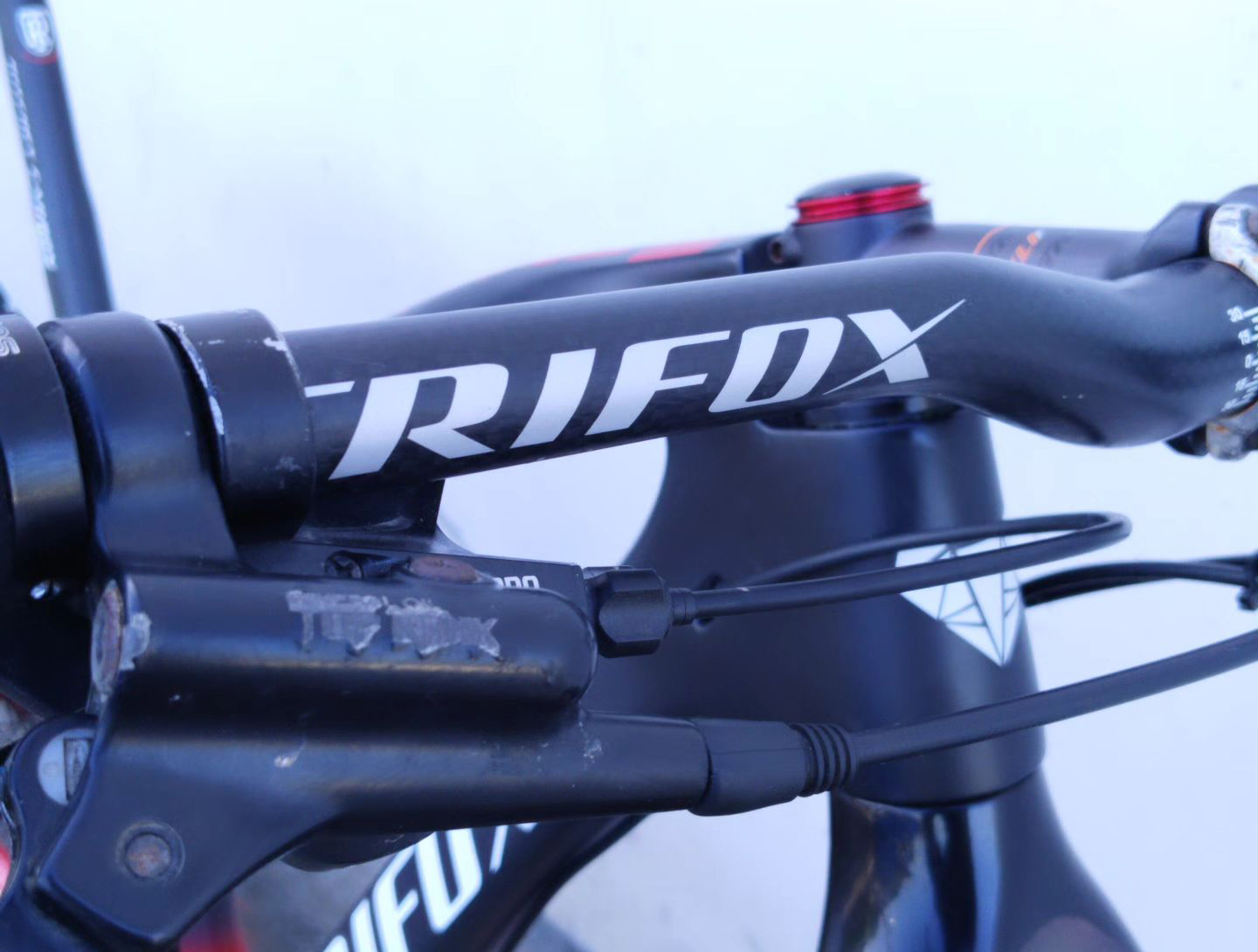
When it comes to optimizing your cycling experience, the right handlebars play a critical role in enhancing both performance and comfort. The design and shape of handlebars affect your posture, control, and overall efficiency, which is why selecting the right type for your riding style is key. Whether you're a commuter, an avid mountain biker, or a road racing enthusiast, understanding the advantages of different bike handlebar types can make a world of difference. 1. Drop Bars: Aerodynamics & Versatility Drop bars are the quintessential choice for road bikes, providing an aerodynamic position that allows you to cut through the wind with ease. These handlebars curve downward and forward, allowing the rider to lower their body to reduce air resistance—a critical advantage for competitive cyclists or those who ride long distances at higher speeds. The multiple hand positions offered by drop bars also help reduce fatigue during extended rides, as riders can shift their grip to relieve pressure on different parts of their hands, wrists, and forearms. The ability to ride in a tucked position on the drops, or to sit more upright on the tops, gives riders flexibility for varied riding conditions. Whether you're sprinting on flat roads or tackling a long climb, drop bars provide the comfort and control you need. Best For: Road cyclists, triathletes, long-distance riders, and competitive racers. 2. Flat Bars: Control & Comfort Flat bars are the go-to option for mountain bikes, hybrid bikes, and commuter bikes. Offering a more upright riding position, flat bars improve visibility, making them ideal for urban environments where maneuverability and quick reactions are essential. The straight, level design gives riders more direct control over the bike, which is particularly beneficial for off-road riding where stability is critical. On the road, flat bars help reduce strain on the back, neck, and wrists by encouraging a more natural posture, particularly for cyclists who may not need to adopt an aggressive, aerodynamic position. For beginners or casual riders, flat bars offer comfort and ease, while still delivering the stability needed for more challenging trails. Best For: Mountain bikers, commuters, casual cyclists, and beginners. 3. Riser Bars: Comfort & Better Handling Riser bars are essentially an elevated version of flat bars, with a slight upward bend. This design raises the handlebars, putting the rider in a more relaxed, upright position. This helps reduce pressure on the back and wrists, which is ideal for cyclists who want more comfort on longer rides, particularly on rougher terrain. In addition to comfort, riser bars offer improved handling, especially when navigating technical trails. The extra height allows for better control and leverage when steering, making riser bars a popular choice for trail and mountain bikers who encounter varied terrain, obstacles, and steep descents. Riser bars also provide more space for installing accessories such as lights, bell, or even a bike computer, making them versatile for both casual and serious riders. Best For: Mountain bikers, trail riders, and cyclists who prioritize comfort and control. 4. Bullhorn Bars: Speed & Comfort Hybrid Bullhorn bars blend the aerodynamic benefits of drop bars with the stability and comfort of flat bars. These handlebars curve forward and upward, resembling the shape of a bull’s horns, hence the name. This design gives cyclists the option to adopt a more aggressive position for speed but with additional hand positions for a more relaxed ride. Bullhorn bars are popular in time trial racing and triathlons, where a more streamlined position is advantageous. They are also great for fixed-gear riders or commuters who want an efficient and comfortable setup. The forward curve of bullhorn bars helps reduce wind resistance while maintaining a comfortable grip, making them ideal for long-distance cyclists who want to combine speed with comfort. Best For: Time trialists, triathletes, commuters, and riders looking for a hybrid bar for speed and comfort. 5. Aero Bars: Maximum Aerodynamics for Racing Aero bars are designed to maximize speed by allowing riders to adopt a low, flat position that minimizes wind resistance. Typically used by triathletes and time trial cyclists, aero bars offer a sleek, tucked position that significantly reduces drag, enabling cyclists to ride faster with less effort. They are mounted on top of drop bars and give the rider a place to rest their forearms while holding onto extensions that curve forward. While aero bars are primarily about performance, they can take a toll on long-term comfort. This makes them less suitable for recreational cyclists or those who prefer more relaxed rides. However, for competitive cyclists aiming to optimize their aerodynamics, aero bars are a crucial tool. Best For: Triathletes, time trial riders, and competitive racers looking to maximize speed. 6. Butterfly Bars: Comfort for Touring For long-distance touring cyclists, butterfly bars (also known as trekking bars) are an excellent choice. These bars have a wide, flared design that provides multiple hand positions, ensuring comfort during extended rides. The shape allows riders to switch between a low, aero position and a more relaxed upright posture, which is crucial for maintaining comfort over long distances and varied terrains. The wide grip and versatility of butterfly bars make them ideal for touring bikes, offering a combination of control and comfort for cyclists tackling long multi-day rides. Best For: Touring cyclists and long-distance riders looking for comfort and versatility. Conclusion: Choose the Right Handlebar for Your Riding Style Choosing the right bike handlebar can significantly improve your riding experience, whether you're seeking speed, comfort, or control. From the aerodynamic drop bars of road bikes to the rugged stability of riser bars for mountain biking, there's a handlebar style suited to every cyclist’s needs. Understanding the specific advantages of each type can help you select the one that best complements your riding style, ensuring a smoother, more enjoyable ride. At Trifox, we offer high-performance carbon bike handlebars that cater to a variety of cycling styles, allowing you to optimize your bike setup for maximum comfort and efficiency. Explore our collection today and find the perfect handlebars for your cycling needs.

Whether you’re a competitive cyclist, a recreational rider, or someone aiming to improve fitness, setting goals is crucial for progress. Goals give purpose and direction to your cycling journey, helping you stay motivated, track progress, and push your limits. But it’s not enough to simply say, “I want to get better at cycling.” Achieving goals requires strategy, dedication, and a clear plan. So, what are the best strategies for setting and achieving your cycling goals? 1. Define Clear, Measurable Goals The first step in any goal-setting process is to define clear, measurable objectives. Without clear goals, it's easy to lose sight of what you want to achieve. Instead of saying, “I want to ride more,” set specific targets, such as: -Ride a certain number of miles per week: “I will ride 100 miles per week.” -Achieve a specific speed or time: “I will improve my 10-mile time by 10%.” -Participate in a cycling event: “I will complete a 100-mile race by the end of the season.” Measurable goals make it easier to track your progress and stay motivated, as you can see the tangible improvements over time. 2. Break Goals into Smaller Milestones Once you have your big goal, break it down into smaller, more manageable milestones. These milestones act as checkpoints on your journey and give you a sense of achievement as you progress. For instance, if your ultimate goal is to complete a century ride (100 miles), break it down into milestones like: -Week 1: Ride 30 miles -Week 3: Ride 50 miles -Week 6: Ride 75 miles -Week 9: Complete 100 miles Smaller, incremental goals help you stay focused without becoming overwhelmed by the larger target. They also provide an opportunity for frequent celebrations and reinforce the habit of progress. 3. Focus on Consistency Over Intensity Consistency is key to progress in cycling. While it’s tempting to push yourself hard during a single workout, long-term success comes from steady, consistent effort. Try to establish a regular cycling schedule that fits your lifestyle and gradually increases in intensity over time. For example, if you’re aiming to build endurance, focus on steadily increasing your weekly mileage. If you’re working on speed, try to gradually improve your time on a set route or track. Remember, consistency doesn’t mean pushing yourself to exhaustion every ride. It means making cycling a regular habit, which will pay off over time. 4. Track Your Progress with Technology One of the advantages of cycling in the modern age is the plethora of technology available to help track your progress. Bike computers, GPS devices, fitness apps, and heart rate monitors can provide valuable data on your performance. Track metrics like speed, distance, heart rate, cadence, and elevation gain to see where you are improving and where you need to focus. For example, tools like Strava and Garmin can track your rides and let you compare performance over time. This data-driven approach helps you stay focused and adjust your training plan as necessary. 5. Create a Training Plan A structured training plan tailored to your cycling goals is essential for making measurable progress. Whether you’re training for a race or simply aiming to improve your fitness, a well-balanced training plan should include: -Endurance rides: Longer, steady rides to build stamina. -Interval training: Short, intense bursts of effort followed by rest periods to improve speed and power. -Strength training: Exercises off the bike (like leg and core workouts) to improve cycling performance and prevent injury. -Rest and recovery: Incorporating rest days is crucial to allow muscles to repair and grow stronger. A structured training plan ensures that you’re working on different aspects of your cycling abilities and prevents burnout. 6. Stay Flexible and Adapt Your Plan Life can sometimes interfere with your best-laid plans, whether it’s weather conditions, illness, or other commitments. It’s important to stay flexible and adapt your goals and training plans when necessary. Missing a few rides or having to adjust your target date isn’t a failure—it’s an opportunity to learn and adjust. For example, if weather conditions cause you to miss an outdoor ride, consider doing an indoor trainer session or an alternate form of exercise to maintain fitness. 7. Celebrate Milestones and Stay Positive Cycling goals can take time to achieve, but celebrating small victories along the way can help you stay motivated. Whether it’s completing a challenging ride, hitting a personal best, or simply sticking to your training schedule, recognize your progress. Positive reinforcement is key to maintaining enthusiasm, especially during tough times. Additionally, maintain a positive mindset and focus on your progress rather than setbacks. Cycling can be challenging, but with persistence and the right strategies, you can overcome obstacles and reach your goals. Conclusion Setting and achieving cycling goals requires more than just motivation—it requires a clear strategy. By setting specific, measurable goals, breaking them into manageable milestones, staying consistent, and tracking progress, you’ll be well on your way to becoming a better cyclist. Remember to stay flexible, celebrate your achievements, and keep a positive mindset. With patience and persistence, you’ll see significant progress and achieve your cycling goals. For more tips and cycling gear recommendations to support your journey, visit Trifox Bike. Happy riding!
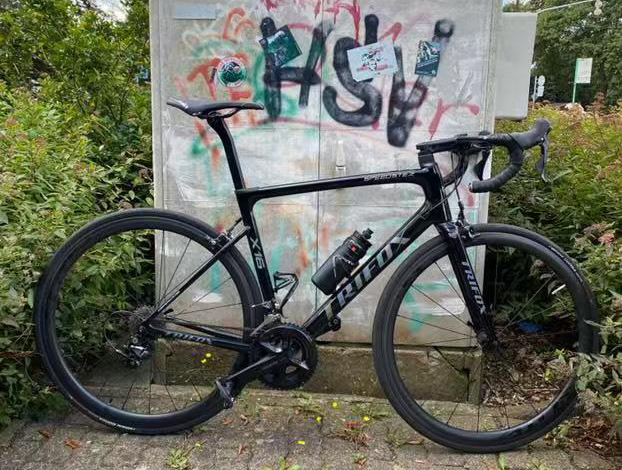
For cyclists, achieving optimal speed and efficiency is often the ultimate goal. Whether you're a competitive racer or an avid long-distance rider, every detail of your bike can contribute to your performance. Among these details, the aero bike frame stands out as a critical component in enhancing cycling efficiency. With advancements in design and materials, such as the Trifox carbon road bike frames, cyclists can now experience remarkable improvements in speed and reduced drag, transforming their riding experience. An aero bike frame is specifically designed to minimize air resistance, which is one of the primary forces working against a cyclist. By reducing drag, these frames allow cyclists to maintain higher speeds with less effort, directly translating to improved performance, especially over long distances and in competitive settings. The aerodynamic shape of the frame, with its sleek lines and strategically positioned tubes, cuts through the air more efficiently than traditional frames. The Trifox carbon road bike frames epitomize this aerodynamic advantage. Constructed using high-quality carbon fiber, they offer both strength and lightness, which are essential for speed and agility. Carbon fiber is recognized for its superior strength-to-weight ratio, allowing frames to remain robust while being significantly lighter than their aluminum or steel counterparts. This reduction in weight means cyclists can accelerate faster, maintain momentum with less fatigue, and climb hills more effortlessly. Moreover, the frame geometry plays a vital role in cycling efficiency. The angles and dimensions of an aero frame are meticulously crafted to optimize the rider's position, aligning the body in a way that reduces frontal air exposure. For instance, the Trifox frames are designed to promote an aggressive riding posture that is aerodynamic yet comfortable for long rides. This geometry not only aids in reducing drag but also enhances the rider's power transfer, ensuring that every pedal stroke is efficiently converted into forward motion. The incorporation of advanced materials and precise frame geometry in aero bike frames also contributes significantly to stability and handling. At high speeds, maintaining control is crucial, and the stiffness provided by carbon fiber ensures that the bike responds promptly and predictably to the rider's input. Whether navigating sharp corners in a race or enduring long straight stretches on a time trial, an aero frame offers the confidence and control needed to maximize performance. In competitive cycling, where every second counts, the benefits of an aero frame become even more pronounced. Reduced drag means that cyclists can save precious energy, which can be the difference between winning and losing in a tightly contested race. For long-distance riders, the energy savings afforded by an aero frame translate to less fatigue and greater endurance, allowing them to complete rides faster and with less physical toll. Ultimately, the integration of an aero bike frame can significantly enhance a cyclist's efficiency by optimizing speed, reducing drag, and improving overall performance. The Trifox carbon road bike frames exemplify these benefits through their innovative design and state-of-the-art construction. Whether you're aiming for a personal best in a race or seeking a more enjoyable and efficient ride over long distances, an aero bike frame can be the key to unlocking your full cycling potential.
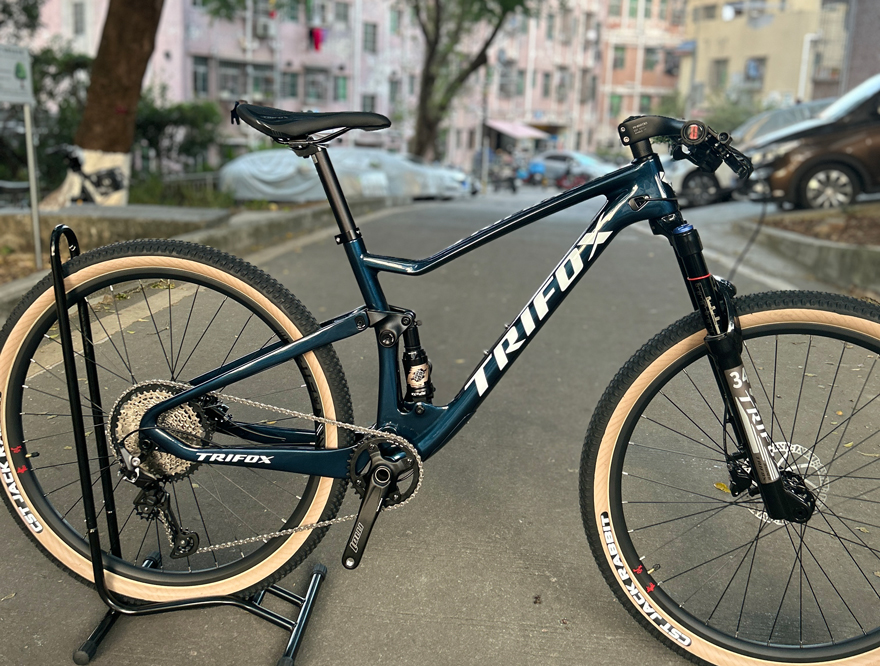
Cross country mountain biking embodies the spirit of adventure, offering riders the thrill of navigating rugged terrains with speed and precision. For those who crave the adrenaline rush that comes with conquering steep climbs and technical descents, cross country mountain bikes are the ultimate companion. These bikes are meticulously designed to deliver a perfect blend of performance, comfort, and control, making them ideal for adventurous riders. Among the notable examples in this category is the TRIFOXBIKE PIONEER, a cross country mountain bike that epitomizes the pinnacle of modern bike engineering. A key feature that sets the TRIFOXBIKE PIONEER apart is its carbon fiber frame. Carbon fiber is heralded for its superior strength-to-weight ratio, providing a lightweight yet robust structure that enhances a bike's agility and speed. For cross country enthusiasts, this translates to less fatigue during prolonged rides and an ability to swiftly maneuver through tight trails and demanding terrains. The TRIFOXBIKE PIONEER's carbon frame not only boosts speed but also absorbs vibrations and shocks, offering a smoother and more comfortable ride. Equipped with dual suspension, the TRIFOXBIKE PIONEER ensures that riders maintain stability and control even on the roughest paths. The suspension system, featuring 120mm of travel, is adept at absorbing shocks from obstacles like rocks and roots, granting riders a seamless and confidence-inspiring experience. This is particularly beneficial for those who relish tackling unpredictable and challenging trails. The dual suspension also improves traction, allowing riders to maintain their momentum and speed without being derailed by uneven ground. Adding to the bike's remarkable specs is the SHIMANO M6100 groupset, known for its precision and reliability. This advanced componentry offers smooth and rapid gear shifting, critical for maintaining control and efficiency during intense rides. Whether you're climbing steep hills or descending fast slopes, the SHIMANO M6100 ensures that your gearing is always optimized for the task at hand, enhancing both performance and rider safety. Furthermore, the TRIFOXBIKE PIONEER is designed with adaptability in mind. Its geometry can be subtly adjusted to suit various riding styles and terrains, ensuring that each rider can tailor their bike to their specific needs. This adaptability is crucial for adventurous riders who may encounter a wide range of environmental conditions and trail types on their journeys. The lightweight nature of the bike, courtesy of its carbon fiber construction, also plays a significant role in its appeal. By minimizing weight, the TRIFOXBIKE PIONEER allows for quicker accelerations and more nimble handling, which are essential for cross country racing and exploration. This reduction in weight does not come at the expense of durability, as the bike is crafted to withstand the challenges of rugged trails. In conclusion, cross country mountain bikes like the TRIFOXBIKE PIONEER are ideal for adventurous riders due to their innovative design and advanced features. The combination of a carbon fiber frame, dual suspension, and a state-of-the-art groupset like the SHIMANO M6100, all work harmoniously to provide an unparalleled biking experience. These elements ensure that riders can tackle diverse terrains with ease, maintain high levels of comfort and control, and push their limits on every ride. For those who seek adventure in the great outdoors, a cross country mountain bike is not just a mode of transport, but a gateway to new experiences and thrills.

When it comes to mountain biking, every component of your bike plays a crucial role in shaping your riding experience. Among these, the fork is indispensable, directly affecting control, weight, and overall bike performance. The 29er rigid fork has become a popular choice for many riders seeking efficiency and simplicity. Advantages of a 29er Rigid Fork 1. Weight Reduction: One of the most significant benefits of a rigid fork is its lightweight nature. Unlike suspension forks, rigid forks eliminate the extra weight added by suspension components, which can be particularly advantageous for riders looking to enhance their biking speed and efficiency. This weight reduction translates into easier handling and quicker climbs, allowing you to conserve energy over long distances. 2. Increased Control and Precision: With no suspension to compress or rebound, a rigid fork offers direct and immediate feedback from the terrain. This characteristic provides riders with exceptional control and precision, making technical maneuvers more predictable and stable. It's especially beneficial for riders who prefer a more direct connection to the trail. 3. Durability and Low Maintenance: Rigid forks are known for their durability and simplicity. Without moving parts that require regular servicing, such as seals and bushings found in suspension forks, maintenance is minimal. This reliability makes rigid forks perfect for bikepacking and long-distance rides where maintenance opportunities might be limited. Why Choose a 29er? The 29-inch wheel size, or 29er, offers several benefits, such as better momentum retention, improved rollover ability on obstacles, and enhanced traction. When combined with a rigid fork, a 29er setup can offer a smooth and efficient ride on a variety of terrains. The larger wheel size helps maintain speed over rough terrains and provides a more stable ride, making it ideal for endurance cycling and cross-country trails. Features of Trifox Rigid Forks Trifox Bike offers an impressive range of carbon rigid forks that are designed to meet the diverse needs of mountain bikers: - Carbon Construction: Trifox’s rigid forks, like the Carbon MTB Fork QMK100, are constructed from high-quality carbon fiber, which ensures they are not only lightweight but also incredibly strong and durable. The carbon material also contributes to vibration dampening, offering a more comfortable ride compared to metal forks. - Competitive Pricing and Offers: Trifox provides excellent value for their products, often offering significant discounts, such as the 41% off on the QMK100 model. This affordability makes it easier for riders to access high-quality components without breaking the bank. Tips for Choosing the Right Rigid Fork 1. Compatibility: Ensure the fork you choose is compatible with your bike frame and wheel size. A 29er fork should match a 29-inch wheel setup. 2. Material Quality: Opt for forks made from high-grade materials like carbon fiber for the best combination of weight savings and durability. 3. Terrain Suitability: Consider the type of terrain you frequently ride on. A rigid fork is ideal for smoother trails and cross-country rides. 4. Budget: Set a budget and look for options within that range that offer the best quality and features. Trifox’s offerings provide great value for money. Conclusion Opting for a 29er rigid fork can redefine your mountain biking experience by providing unmatched control, reduced weight, and minimal maintenance. Trifox Bike emerges as a leading choice with its high-quality carbon constructions and customer-friendly services. Whether you're an avid cross-country rider or someone seeking a reliable fork for everyday trails, a 29er rigid fork from Trifox can be an excellent addition to your mountain bike, enhancing both performance and enjoyment on every ride.
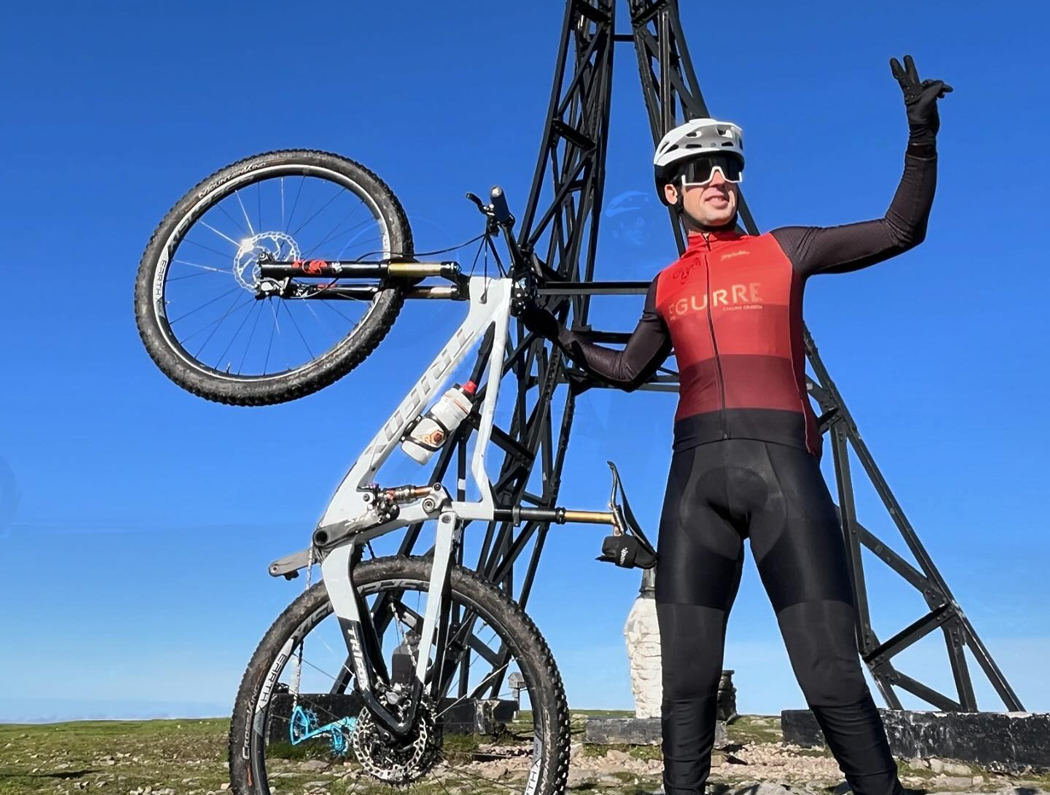
Choosing the right full suspension bike can transform your off-road biking experience, offering enhanced comfort, control, and performance. Full suspension bikes are designed to handle rough terrains by absorbing shocks from both the front and rear, making them ideal for trail and mountain biking. Here’s a comprehensive guide to help you choose the perfect full suspension bike, using insights from Trifox Bike's MFM100 full suspension carbon MTB frame. Understanding the Benefits of Full Suspension Bikes Full suspension bikes provide the advantage of dual shock absorption, which significantly reduces rider fatigue and enhances traction on uneven terrains. This dual suspension system allows for better handling and control, especially on descents and technical trails. The added comfort and control make full suspension bikes a popular choice for both competitive riders and casual adventurers. Key Features of the MFM100 Frame The Trifox MFM100 frame exemplifies what to look for in a high-performance full suspension bike: 1. Material and Weight: Made from T800 carbon fiber, the MFM100 frame is ultra-lightweight while maintaining strength and durability. Weighing just over 2kg, it provides a great balance for speed and endurance. 2. Boost Design: With a 148 x 12mm spacing, it enhances the rear wheel's strength and stiffness, accommodating up to 2.35" tires for better traction and stability. 3. Geometry and Suspension: The frame features a 68.5° head tube angle and a customizable rear shock mount, allowing riders to fine-tune their setup for optimal performance and comfort. 4. Internal Cable Routing: This feature offers a sleek, uncluttered look while protecting cables from the elements, contributing to the bike's overall aesthetic and aerodynamics. Steps to Choose the Right Full Suspension Bike 1. Determine Your Riding Style: Consider the type of terrain you plan to tackle. Trail bikes are versatile and suitable for various conditions, while downhill bikes are optimized for steep descents. 2. Choose the Right Frame Material: Carbon fiber frames like the MFM100 are preferred for their lightweight and strong construction, which enhances handling and speed. 3. Consider Suspension Type and Travel: Look for bikes with adjustable suspension to tailor your ride based on the trail conditions. The MFM100 offers travel options of 100mm to 115mm, providing flexibility for different terrains. 4. Evaluate Bike Geometry: Geometry affects handling and comfort. A longer wheelbase and slack head angle offer stability on descents, while a steeper seat tube angle improves climbing efficiency. 5. Assess Component Quality: Pay attention to the quality of components, such as the drivetrain, brakes, and wheels. High-quality components like those offered by Trifox ensure reliability and performance. 6. Test Ride If Possible: If you have the opportunity, test ride different models to feel the differences in handling and comfort. This can provide invaluable insight into what fits your style and preferences. Tips for Making the Right Choice - Budget Considerations: Determine your budget beforehand and focus on finding the best quality within that range. Trifox offers competitive pricing on high-performance frames like the MFM100. - Future Upgrade Potential: Consider a bike that allows for easy component upgrades. This flexibility can help you improve performance as your skills advance. In conclusion, selecting the right full suspension bike involves understanding your needs, evaluating technical specifications, and making informed decisions based on your riding style and goals. The Trifox MFM100 frame is an excellent example of a high-quality option that caters to various biking needs, making it a strong contender for anyone looking to enhance their off-road adventures. By following these steps, you can find a bike that delivers both excitement and comfort on every ride.

Join everyone to Show your a Trifox product picture to mark Trifox's 8th Anniversary. And you can easily win a super prize. Try Your Luck NOW! Prizes are: Special Prize (1 Person):Your Wish Trifox Goods 1st Prize(1 Person):Carbon fiber Road Bike Frame X16 2nd Prize (2 Persons):Alloy Bike Wheels Or Bicycle Dropper Seatpost 3rd Prize(3 Persons):Carbon Flat Bar FHB100+ Bike Grips MBT100 Rules: 1. Please select the best Trifox product picture (No matter which store you purchased Trifox products from), and send the high-quality picture to our Email as an attachment. Can send your social media platform to us if you have. You are also welcome to share it on social media and @trifoxbike official account. 2. If you are willing, you can share your story with Trifox and your wishes for the Trifox anniversary (you will be lucky enough to get a "special prize") and send it to our email along with the pictures. 3. After the deadline for sending pictures, our staff will collect all Trifox pictures and display them in a form; You can share the form link with your friends to vote (everyone can participate, each person can only vote once), the one with the most votes will win, and the winner will be announced on December 7. Email: business@trifoxbike.com Email Subject: Name +product+ Country+ or Trifox User Story Image Tips: Any Trifox product images you have, whether it is a completed bike/bike frame/bike wheelset/bike handlebar/wheels hub, etc. Walk us through your cycling journey! Trifox turns 8 this year, and this can't happen without your support! On December 2, We Will show the bike pictures all have shared with Trifox, and we would like to invite you to cast your vote. Picture Deadline: 2024/11/30 Everyone votes time: 2024/12/02--12/04 Winner Announcement: 2024/12/07 Good Luck!
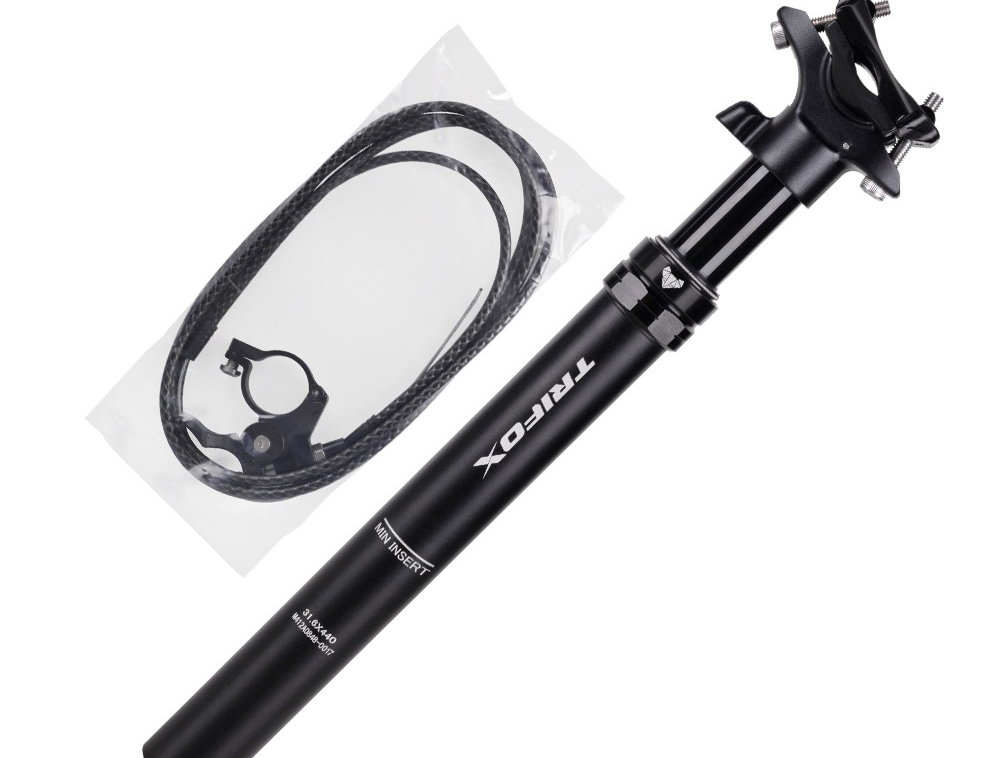
Cycling enthusiasts know that every component of a bike contributes to the overall riding experience. One often overlooked part is the seatpost, which can significantly impact comfort, performance, and bike handling. Among the various options available, the 27.2 carbon seatpost stands out for its unique benefits, making it a top choice for many cyclists. The Benefits of a 27.2 Carbon Seatpost 1. Weight Reduction: Carbon seatposts are renowned for their lightweight properties. The 27.2 mm diameter is particularly popular because it offers a perfect balance between strength and weight savings. A lighter seatpost reduces the overall bike weight, enhancing acceleration and climbing efficiency, especially beneficial for competitive cyclists. 2. Vibration Dampening: Carbon fiber is excellent at absorbing road vibrations, providing a smoother ride. This feature is crucial for long-distance cyclists who need to minimize fatigue over extended rides. The 27.2 carbon seatpost helps in reducing the vibrations felt through the saddle, improving comfort significantly. 3. Performance Improvement: By lowering the bike's weight and providing better vibration absorption, a carbon seatpost can dramatically improve ride quality and performance. Cyclists often experience better control and responsiveness, which is essential for high-speed descents and technical terrains. Why Trifox Bike? Trifox Bike has established itself as a leader in manufacturing high-quality carbon bike components, including seatposts. Here are some reasons why Trifox is an excellent choice for your next bike upgrade: - Quality and Durability: Trifox seatposts, such as the SLS21 Bike Seatpost, are crafted from premium carbon fiber, ensuring durability and longevity. These seatposts are tested for strength and resilience, providing peace of mind for cyclists tackling challenging routes. - Affordable Pricing: Trifox offers competitive pricing on their carbon seatposts, with discounts making them accessible to a broad range of cyclists. For instance, the AP316 Dropper Seatpost is available at a 58% discount, showcasing Trifox's commitment to affordability. - Customer Support and Convenience: With free shipping on orders over $50 and 24/7 live chat support, Trifox ensures a seamless shopping experience. Their secure payment options add an extra layer of trust for customers purchasing online. Tips for Choosing the Right Seatpost When selecting a 27.2 carbon seatpost, consider the following factors to ensure it meets your needs: - Compatibility: Ensure the seatpost diameter matches your bike's frame specifications. A 27.2 mm seatpost is standard, but always double-check your bike's requirements. - Riding Style: Consider your riding style and conditions. If you frequently ride on rough terrains, prioritize seatposts known for excellent vibration dampening. - Adjustment and Fit: Look for seatposts with easy adjustability for saddle height and angle, ensuring you can fine-tune your position for maximum comfort. - Material Quality: Opt for seatposts made from high-grade carbon fiber for the best balance between weight, strength, and durability. In conclusion, choosing a 27.2 carbon seatpost can significantly enhance your cycling experience by offering weight savings, improved comfort, and enhanced performance. Trifox Bike provides a range of high-quality and affordable options, making it an ideal choice for cyclists looking to upgrade their bike components. By focusing on compatibility, riding style, and material quality, you can select a seatpost that perfectly complements your cycling needs and preferences.

















